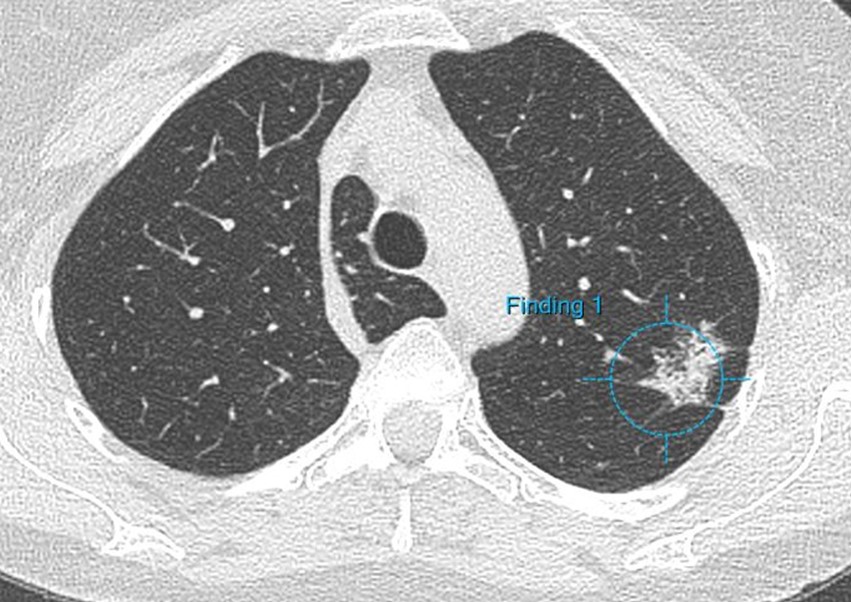
A pan-Canadian TFRI team of cancer researchers has developed a predictive model for detecting early-stage lung cancer in high-risk individuals with significantly greater accuracy than other leading models. This study suggests the team’s innovative approach could be considered for use in lung cancer screening programs both in Canada and around the world.
The results, highlighted in a study published in The Lancet Oncology (Oct. 17, 2017), were also presented at the 18th World Conference on Lung Cancer in Japan by co-principal investigator Dr. Stephen Lam (chair of British Columbia’s Provincial Lung Tumour Group at BC Cancer and a professor of medicine at the University of British Columbia).
The Pan-Can Lung Cancer Risk-Prediction Model – which is used to determine which individuals should undergo annual CT screening to detect early-stage lung cancer – outperformed comparable models such as The National Lung Screening Trial (led by the National Cancer Institute in the U.S.). The Pan Can Model diagnosed lung cancer in 6.5 per cent of people screened with a follow-up of five years, compared to the four per cent of cases found by the National Lung Screening Trial over a longer term (6.5 years). Further, 77 per cent of the lung tumours diagnosed with the Pan Can Model were caught in early stages, when the cancer is potentially curable, compared to 57 per cent in the NLST study.
Currently, both the U.S. and Canadian lung cancer screening guidelines are based on age and smoking history. One of the main advantages of the Pan Can Model is it uses a risk prediction tool that looks at numerous additional variables: sex, family history of lung cancer, chronic obstructive pulmonary disease, educational level and body mass index. The TFRI Pan-Canadian Early Lung Cancer Detection Study was expanded in 2017 to examine factors such as genetics and air pollution in lung cancer risk.
Lung cancer is the most common cause of cancer death around the world with one of the worst survival rates, yet if caught early enough it can be cured in 70 per cent of cases. An accurate predictive model to select candidates who would benefit from CT screening is crucial. The Pan Can Model was developed with $8.4-million support from TFRI and The Canadian Partnership Against Cancer.
Study: Participant selection for lung cancer screening by risk modelling (the Pan-Canadian Early Detection of Lung Cancer [PanCan] study): a single-arm, prospective study.
Authors: Martin C Tammemagi, Heidi Schmidt, Simon Martel, Annette McWilliams, John R Goffin, Michael R Johnston, Garth Nicholas, Alain Tremblay, Rick Bhatia, Geoffrey Liu, Kam Soghrati, Kazuhiro Yasufuku, David M Hwang, Francis Laberge, Michel Gingras, Sergio Pasian, Christian Couture, John R Mayo, Paola V Nasute Fauerbach, Sukhinder Atkar-Khattra, Stuart J Peacock, Sonya Cressman, Diana Ionescu, John C English, Richard J Finley, John Yee, Serge Puksa, Lori Stewart, Scott Tsai, Ehsan Haider, Colm Boylan, Jean-Claude Cutz, Daria Manos, Zhaolin Xu, Glenwood D Goss, Jean M Seely, Kayvan Amjadi, Harmanjatinder S Sekhon, Paul Burrowes, Paul MacEachern, Stefan Urbanski, Don D Sin, Wan C Tan, Natasha B Leighl, Frances A Shepherd, William K Evans, Ming-Sound Tsao, Stephen Lam, for the Pan Can Study Team*
Funding: Terry Fox Research Institute and Canadian Partnership Against Cancer